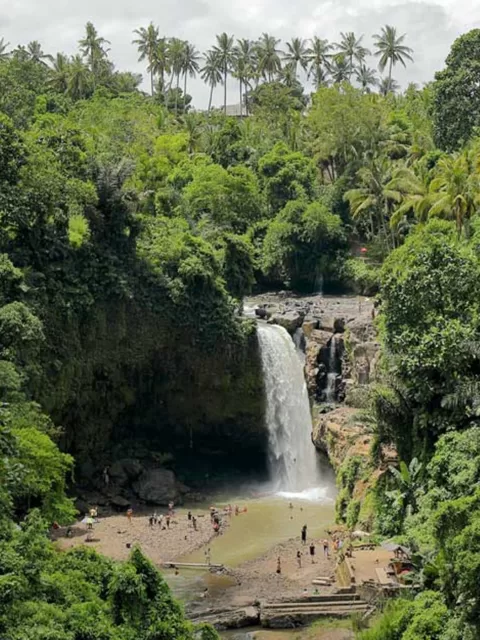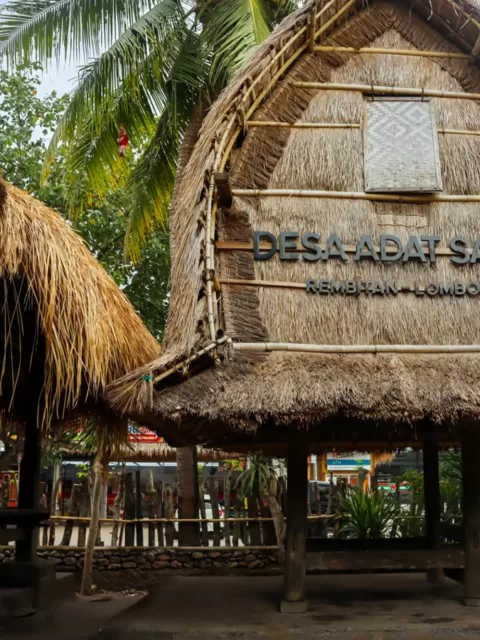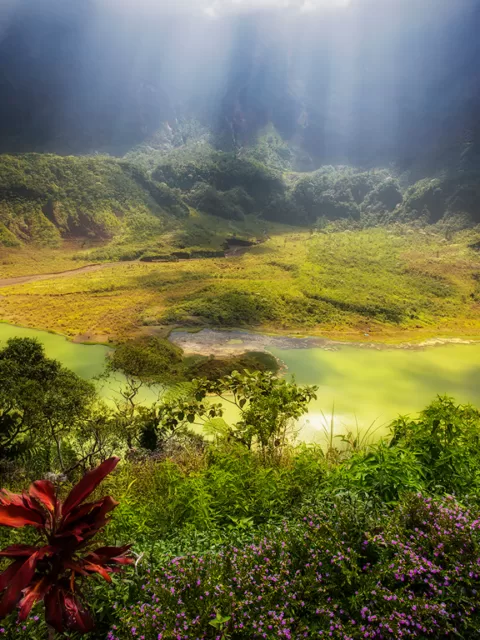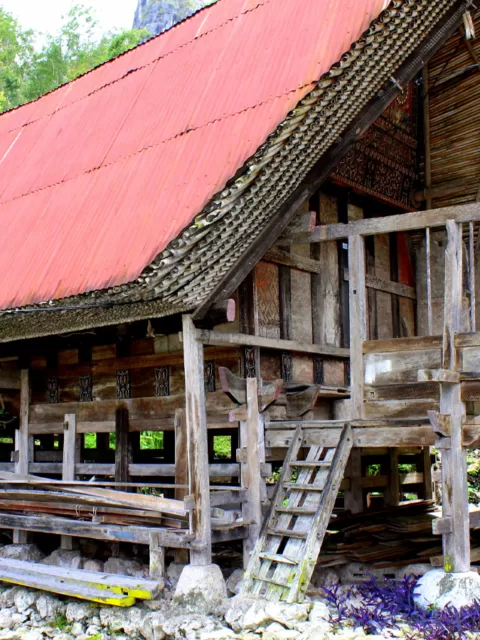Javanese Majesty The Cultural Pillar of Suku Jawa in Indonesia
I. Introduction
A. Overview of Javanese Culture The Javanese, known as Suku Jawa, are one of the most prominent ethnic groups of Indonesia. Their rich tapestry of traditions, stretching back centuries, encapsulates the cultural diversity in Indonesia. As one of the many indigenous communities in Indonesia, the Javanese have carefully preserved their ancestral practices, creating a vibrant mosaic of ethnographic diversity that draws travelers from around the world.

A. Cultural Significance Wayang Kulit holds a special place in the heart of the Javanese. As an integral part of indigenous storytelling in Indonesia, it conveys ancient myths, moral tales, and historical narratives. The intricate leather puppets, manipulated by skilled puppeteers behind a screen, breathe life into tales that have shaped the ethnic identities in Indonesia.
B. The Cultural Attraction for Indonesia Travel For travelers venturing to Indonesia, the Javanese culture provides a unique insight into the indigenous art and crafts, storytelling, and traditional knowledge of Indonesian tribes. The native customs and rituals of Indonesia, especially among the Javanese, offer an unparalleled immersion into the country’s soul, making it a focal point for cultural tourism.
II. Javanese Culture: A Treasure for Travelers
A. Wayang Kulit and Gamelan Music Central to the Javanese cultural experience are the mesmerizing performances of Wayang Kulit (shadow puppetry) accompanied by the ethereal sounds of Gamelan music. These art forms, deeply rooted in the tribal cultures of Indonesia, offer travelers a window into the indigenous storytelling and ancestral practices of Indonesian tribes.
B. Batik Artistry Batik, with its intricate designs and rich colors, stands as a testament to the indigenous art and crafts in Indonesia. This traditional Javanese fabric-dyeing technique is not merely a craft but a symbol of the ethnolinguistic groups in Indonesia, representing their unique traditions and histories.
C. Javanese Cuisine and Hospitality The culinary landscape of Java is as diverse as its cultural heritage. With flavors influenced by age-old indigenous recipes, Javanese cuisine provides a gastronomic journey for travelers. Paired with the renowned “Ramah Tamah” hospitality, every meal becomes a feast for the senses.

III. Wayang Kulit: The Enchanting World of Shadow Puppets
B. Attending Wayang Kulit Performances For tourists, attending a Wayang Kulit performance is akin to stepping back in time. The play of shadows, intricate puppet movements, and dramatic narratives make for an unforgettable cultural experience. Many performances cater specifically to tourists, with English translations and explanations, ensuring a deeper understanding of the stories portrayed.
C. The Role of Wayang Kulit in Indonesia Travel Incorporating Wayang Kulit into Indonesia travel itineraries provides travelers with an authentic taste of the country’s indigenous heritage. It’s an opportunity to witness firsthand the cultural preservation among Indonesian tribes, ensuring that these traditions continue to thrive for generations to come.

IV. Gamelan Music: Mesmerizing Sounds of Java
A. The Gamelan Ensemble At the heart of Javanese musical tradition lies the Gamelan – an ensemble of metallic percussion instruments like gongs, drums, and xylophones. The harmony produced by these instruments is more than just music; it’s the soulful rendition of the traditional Indonesian tribes’ emotions and stories. The ensemble’s structure and composition often vary regionally, reflecting the cultural diversity in Indonesia.
B. Gamelan Performances for Tourists Travelers to Java are often welcomed with the resonating sounds of Gamelan, especially during local festivals or ceremonies. For those eager to experience it firsthand, many communities and cultural centers offer live Gamelan performances. These not only entertain but also educate tourists about the intricate rhythms, scales, and melodies unique to the indigenous communities of Indonesia.
C. Immersion in Gamelan Music during Indonesia Travel Including Gamelan music in travel plans isn’t merely about listening; it’s about immersion. Several workshops allow travelers to learn basic Gamelan techniques and rhythms, offering a deeper appreciation for the skill and tradition behind every note. This hands-on experience ensures that travelers don’t just hear the music but feel its heartbeat.

V. Batik Artistry: A Visual Journey Through Javanese Culture
A. The Art of Batik-Making Batik is not just fabric; it’s a canvas where stories, beliefs, and traditions of the Javanese people come to life. Using wax-resist dyeing techniques, artisans create intricate designs that often narrate tales from indigenous storytelling or represent motifs from nature. This ancestral practice of Indonesian tribes is a testament to their deep connection with their environment and history.
B. Visiting Batik Workshops and Museums To truly understand the labor of love that goes into every Batik piece, one must witness the process. Travelers can visit Batik workshops, where artisans demonstrate the meticulous art of wax application, dyeing, and boiling. Museums, on the other hand, display centuries-old Batik pieces, offering a glimpse into the evolution of designs and techniques over the years.
C. Bringing Home Javanese Batik as Souvenirs No trip to Java is complete without acquiring a piece of Batik. Whether it’s a scarf, dress, or wall hanging, these items serve as a tangible memory of the journey through Javanese culture. They’re not just souvenirs but pieces of indigenous art and crafts from Indonesia, each telling a story worth cherishing.

VI. Culinary Delights: Savoring Javanese Cuisine
A. Iconic Javanese Dishes The Javanese culinary landscape is a melting pot of flavors. Dishes like Gudeg, a slow-cooked jackfruit curry, or Satay, skewered and grilled meat, offer a palate of tastes representing the cultural diversity in Indonesia. Infused with local herbs and traditional knowledge of Indonesian tribes, every meal is an exploration of Java’s rich agricultural heritage.
B. Exploring Local Markets and Street Food For food enthusiasts, local markets and street food stalls are treasure troves. From the spicy Bakso soup to the sweet Martabak, these stalls capture the essence of Javanese cuisine. Exploring these bustling food hubs gives travelers a firsthand experience of the indigenous customs and rituals associated with food.
C. Culinary Tourism in Java With the increasing global interest in food tourism, Java presents a unique culinary journey. From cooking classes that delve into traditional recipes to farm visits understanding the region’s agriculture, Java offers travelers a chance to not just taste but create, ensuring they carry with them flavors intertwined with stories.

VII. Hospitality and Culture: Experiencing “Ramah Tamah”
A. Javanese Hospitality Traditions “Ramah Tamah,” a Javanese phrase reflecting warm hospitality, is an intrinsic part of Javanese culture. The Javanese believe in treating guests as family, ensuring they experience the true essence of their community. This indigenous heritage in Indonesia is seen in everyday interactions, where locals greet travelers with genuine smiles and open arms, inviting them into their homes and hearts.
B. Homestays and Community Interaction One of the best ways to experience “Ramah Tamah” is through homestays. These lodgings, often nestled in rural settings, allow travelers to live alongside local families. More than just a place to rest, these stays are a cultural exchange, offering insights into daily life, native customs and rituals in Indonesia, and the age-old indigenous storytelling traditions that evening gatherings often feature.
C. Cultural Exchange Opportunities for Travelers Interacting with local communities is a treasure trove of learning. Whether it’s participating in communal farming, attending traditional ceremonies, or engaging in indigenous art and crafts, these exchanges allow travelers to understand the ancestral practices of Indonesian tribes. It’s a symbiotic relationship where stories, knowledge, and traditions are shared, enriching both the traveler and the community.

VIII. Exploring Javanese Arts and Traditions
A. Preservation of Cultural Heritage The Javanese take immense pride in their cultural heritage, making considerable efforts to preserve it for future generations. Traditional dance schools, art workshops, and local institutions focus on imparting traditional knowledge of Indonesian tribes to the youth. Festivals, held throughout the year, celebrate the unique traditions of Indonesian tribes, ensuring they remain alive and vibrant.
B. Attending Javanese Dance Performances Javanese dance, with its graceful movements and symbolic gestures, narrates tales of folklore, myths, and historical events. For travelers, attending these performances is a visual treat, offering a glimpse into the cultural diversity and ethnographic diversity in Indonesia. The dances, often accompanied by Gamelan music, weave a mesmerizing tapestry of sound and movement.
C. Traditional Ceremonies and Festivals Throughout the year, Java is abuzz with festivals and ceremonies that celebrate its rich cultural tapestry. From harvest festivals to wedding ceremonies, each event is a colorful display of indigenous customs and rituals, offering travelers an immersive experience into the cultural preservation among Indonesian tribes.

IX. Royal Connection: The Kraton Ngayogyakarta Hadiningrat
A. The Sultan’s Palace The Kraton, or the Sultan’s Palace, in Yogyakarta is a living testament to Javanese royalty and its deep-rooted connection with the people. As both a residence and a cultural center, the Kraton showcases the rich history, art, and traditions of the Javanese. Its intricate architecture and grand courtyards echo tales of yesteryears, reflecting the ethnic identities in Indonesia.
B. Cultural Significance of the Kraton Beyond its opulent walls and golden artifacts, the Kraton’s true significance lies in its role as a cultural custodian. It regularly hosts traditional performances, ceremonies, and events, celebrating and preserving the indigenous heritage of Indonesia. The Kraton is not just a palace but a beacon for Javanese culture and traditions.
C. Visiting the Kraton as Part of Indonesia Travel For travelers, a visit to the Kraton offers an unparalleled journey through time. Guided tours explain the palace’s historical significance, its architectural marvels, and its role in shaping Javanese history. With its museums showcasing royal artifacts and vibrant cultural performances, the Kraton is a must-visit to truly embrace the Javanese spirit.

X. Conclusion
A. Embracing Javanese Culture in Indonesia Travel The soul of Java lies in its people, traditions, and stories. From the rhythmic beats of Gamelan to the hospitality of “Ramah Tamah,” Java invites travelers to experience its heart and soul. As visitors navigate through its landscapes, what truly remains is the warmth of its people and the rich tapestry of its culture.
B. The Unforgettable Cultural Experience in Java Java, with its myriad of experiences, offers travelers more than just scenic beauty. It promises memories of heartfelt interactions, mesmerizing performances, and culinary delights. Every story heard, every dance witnessed, and every dish tasted adds to the unforgettable cultural journey through this Indonesian gem.
C. Encouragement for Travelers to Explore Javanese Traditions To truly understand Indonesia, one must delve into the traditions of its tribes, especially the Javanese. The island beckons with tales waiting to be heard, dances waiting to be seen, and traditions waiting to be experienced. And as travelers embark on this journey, they become storytellers, passing on the rich legacy of Java to the world.












